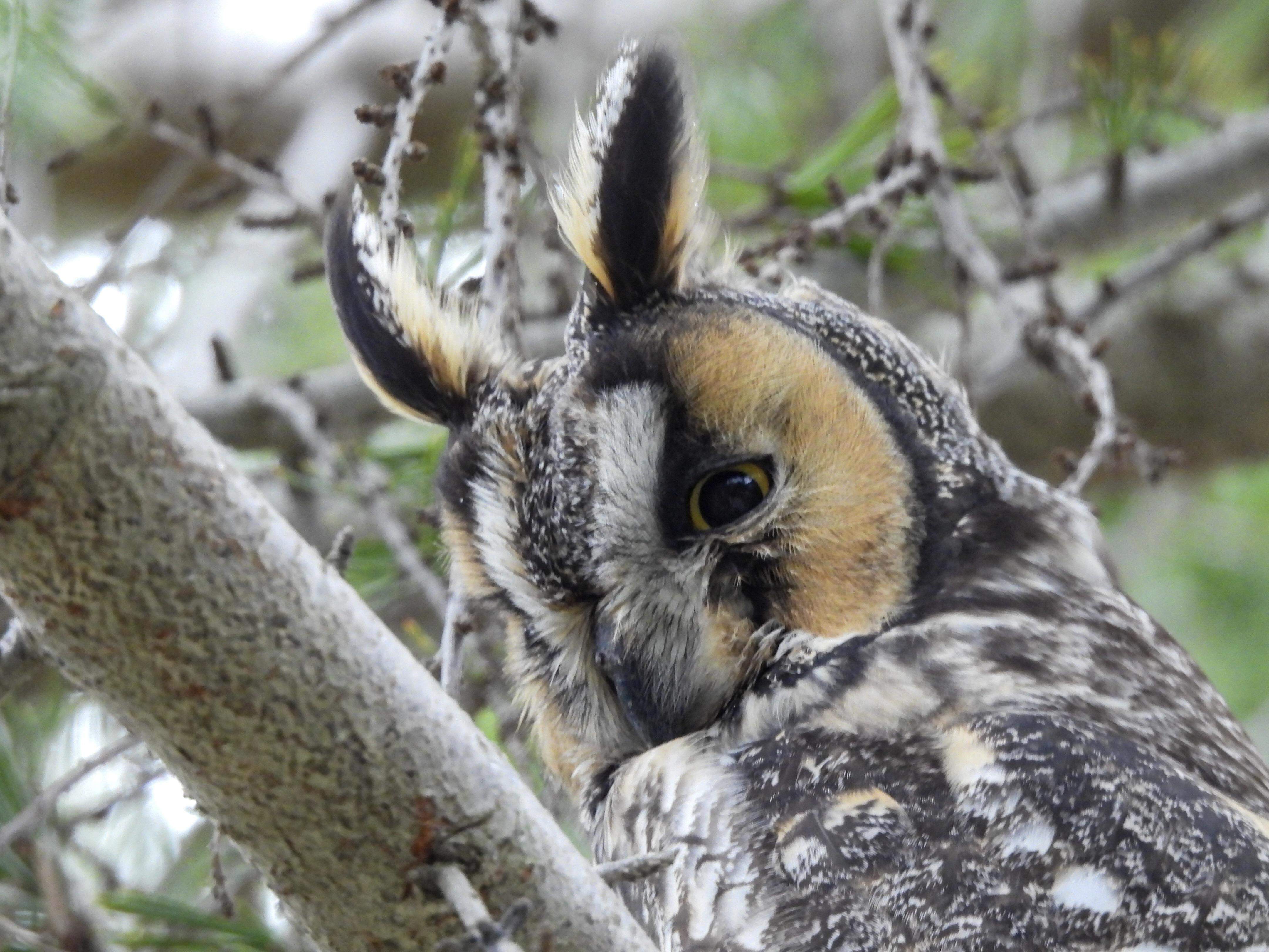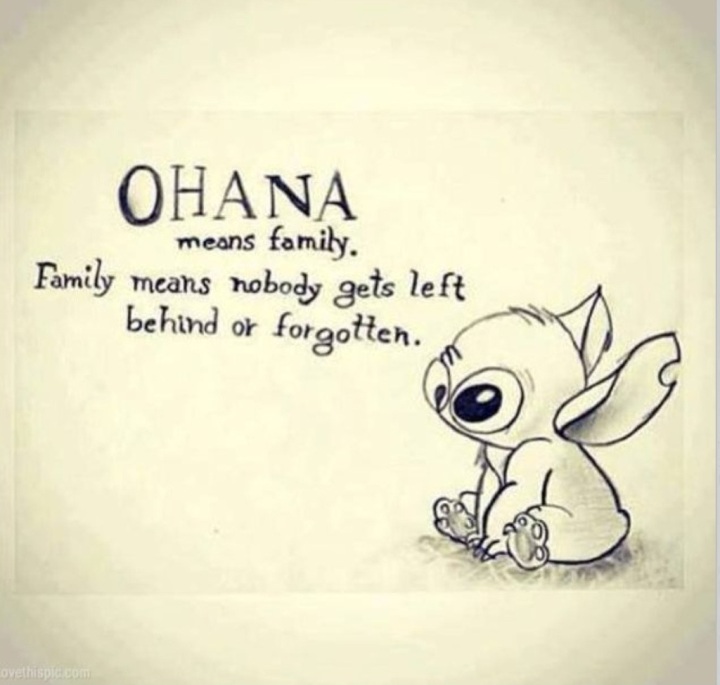Transportability is a huge consideration. Pawpaws can’t be transported nationally, for example. The plants we eat have been bred for maximum marketability, which includes getting the produce from where it grows to where people need it.
Exactly. Instead of complaining people can just grow them themselves. It’s not like commercial growers have a monopoly on growing food.
Otherwise this is a typical lemmy complaint. Someone who isn’t me didn’t do a thing I like. That makes someone else besides me bad. If there are things you want to exist in this world then you have to do things. This realization is real adulthood.
I planted my garden this year and then had that realization, so I divorced my husband and lost my garden. I went back and grabbed all the veggies from it 3 months later: some small potatoes, some peppers, small onions, and I grabbed my baby strawberry plants that survived the summer without regular watering. My ex has admitted he let my garden die. Be the change you want to see in the world
Some local plants might be edible and even delicious, but they are either way to costly to grow or harvest, or they are nigh impossible to preserve. Or they simply are edible, but not sustaining, like sucking nectar from stinging nettle blossoms.
Some are acquired tastes like e.g. turnip tops. You could probably harvest tons of them, but there is no real market for it.
Or take edible flowers, you basically can’t preserve them, and all you can do is put them on a dish for decoration.
Pearl Onions are a borderline case, for example. Between harvest and sitting in the pickling juice they only have a few hours (3-6, IIRC), or they are a case for the compost heap.
For Polish speakers theres this book by prof. Łuczaj: https://lukaszluczaj.pl/dzikie-rosliny-jadalne-polski-pelny-tekst/ - every plant that grows in our region and can be eaten. In some more edgy cases backed by his own experimentation on himself.
Does he also document the fuckable plants? I’m asking for a friend
Oh boy are you in for a surprise…

There’s his “Sex in the great (grand?) forrest”. Its about best plants to fuck on (or under). Mostly. As side notes it does point out some local plants in particularly interesting shapes, or some one might rub themself against… This guy is commited. And also an actual true professor on an actual university.
Wow, you did not disappoint.
Tbf, many are kinda disgusting to modern palettes. Lamb’s quarter sucks compared to stuff like spinach, kale, or collards. Pokeweed needs extensive preparation to make it safe. Wood sorrel, horseherb, and prickly pear grows where I currently live, but I haven’t tried them yet. My dog likes horseherb despite the little spines for some reason. My grandmother used to fry dandelions and plaintain which was pretty good.
Wood sorrel is an interesting case. In the US, we don’t commonly eat our native wood sorrel, i.e. the thing that looks like clover. But we do eat starfruit. Starfruit is also a type of wood sorrel, just one that has a much larger, sweeter fruit, that’s been selectively bred for agriculture. But if you look at the fruits of our native plant, they do look like tiny starfruit! link
They’re still tasty. They’re very tart, but with no sweetness. They could be good to top a salad. But you’d have to pick hundreds of them to get as much food as you get from one starfruit, and it wouldn’t be as tasty as a fruit. Like eating a lemon instead of an orange.
That said, I still love them! The leaves and stems also have a good taste. They’re everywhere and have a lovely burst of flavor. Just be careful if you have kidney stones or kidney disease, any kind of wood sorrel - including starfruit - has oxalic acid which can be tough on kidneys.

Toxic web.
Got the same in the UK, had to disable uBlock for Cloudflare to let me through.
For another example of a plant that just didn’t make it into modern society at scale, there are skirrets. Carrots, parsnips, and skirrets were related umbellifer plants with edible, nutritious roots, cultivated over the centuries as food. Carrots and parsnips were responsive to breeding for root size, and could produce comparatively huge roots, but skirrets never really did. Once the potato was brought over from the new world, the skirret fell out of favor.
I always find it interesting when comparing cuisine between cultures of stuff that exists in different places but only eaten in one (or a few) of them. Like ok, I get that if you’re not used to much seafood in general you maybe will eat some grilled salmon but you’re not gonna be eating the guts out of crabs or lobsters or whatever. But then there’s something like burdock root, which grows in the US, doesn’t have a strong taste, and is just like various other root vegetables we do eat (although not as sweet as something like a carrot). But the US doesn’t eat it while east Asia does.
How do you get dandelions to not taste like poison?
She made something like this: https://www.allrecipes.com/recipe/214172/fried-dandelions-appalachian-style/
Oh! I will get to taste appalachian cuisine (*_*) Thank you !
Oh, the flowers. The leaves are edible and even taste good aside from the bitterness
So… cool story
Ann Reardon from How to Cook That, took Coke, and tested it for HFCS, it of course indicated it was in there, then she took a Mexican Coke, and it also indicated, but it claims not to use it.
Apparently, the acid in the Coke breaks down the sucrose in the cane sugar, making the product very close to the HFCS variant. She followed up with a blind taste test (very limited size, just her family) and found they were very close in flavor.
It would appear that we do to some decent extent enjoy HFCS.
Have you seen the size of the average American?
Who is ignoring that we don’t like HFCS? It’s downright an addictive substance.
I think if you ask 100 Americans, they will overwhelmingly be down on HFCS.
I don’t think I’ve ever heard anyone that’s tried coke with cane sugar and doesn’t say that it’s better than regular cook.
Everybody I know that drinks Coke thinks that Mexican Coke is superior, but is hard to get in a lot more expensive.
There’s a pretty significant campaign against it.
I harvest stinging nettle to use as a spinach replacement
I’m going to try to make maple syrup from big leaf maples this year too!
I mostly eat spinach now for potassium, but I just looked it up and stinging needle has only 25% lower potassium content than spinach, so at least for my use case it seems like a fairly good substitute seeing as how well stinging needle grow.
How do they taste? Do they not, uh, sting with the little spikes?
I got then popping up all around.
If you cook them they stop stinging.
My mother makes pasta with them too, puts them in the dough.
I blanch them and then freeze them. So no stinging!
if you crush them, or flatten them, they don’t sting.
How to harvest, dry, and make tea with nettles:
https://slrpnk.net/comment/16978019
If you have arthritis or hayfever they’ve been shown to help with that. Science has confirmed the old wives tales traditional herbal remedy works for this one. Not as effectively as modern medicine of course but if it’s all you can afford, or whatever, then something is better than nothing.
You would harvest the leaves when they are small and young. And they would be one of the first fresh greens available in the spring. But their season quickly passes as the plants grow pretty fast.
You can make them into patties and fry them up, surprisingly good.
Every September, I make a year’s supply of beautyberry jelly.
I do something that I don’t recommend people do: I can it. I’m like 5 years in, and I haven’t had a problem yet. There’s a series of pages in my Ball canning recipe book that the beautyberry jelly recipe I use conforms pretty close to, but it isn’t USDA approved or otherwise published by some authority as safe for canning, I’m going to recommend you avoid this.
Beautyberries, if you’re not familiar with them, are a bush/shrub native to the American southeast. The plant looks like a bunch of stems with leaves that grow along them, along with clusters of tiny white flowers in the spring at the base of each pair of leaves, that turn into vivid purple berries in the fall. The leaves can be used as a mosquito repellent if rubbed on clothing, and the berries are edible…although they’re bitter and astringent. Boiling them in water to make an extract and making jelly from that extract results in a bright red jelly that tastes like strawberry and tea.
It’s something of a pain to harvest, so it pretty much isn’t commercially done.
Everything I’ve seen from Ball/Kerr has been safe canning recipes! Love their stuff, use their website for recipes often.
Oh I’ve misread. You picked a berry close to it and are substituting that in, yeah? I’d try it on myself but probably wouldn’t give it away.
Sounds like a beautiful jelly though!
Yes, I have Ball’s Complete Book Of Home Preserving (which is a terrible title, as the book contains no information about dehydrating, freeze drying, jerking or brewing, only water bath and pressure canning). It has a procedure for “berry” jelly where it lists half a dozen different kinds of berries and how to extract juice from them, to include elderberry, and then you use a quantity of said “berry” juice in a standard jelly recipe. Independent of this, I’ve found a beautyberry jelly recipe that resembles this procedure, so I feel okay canning it, and have done so for years now. I’m going to stop short of recommending it to anyone else. By all means, if you’ve got access to beautyberries, make the jelly, but can it at your own risk.
No beautyberries here! Tons of wild grapes though. Horrible producers those are though. All vine and no grapes!
I mean there probably are lots of reasons why we farm only certain plants.
For example dewberries have short harvest window and as far as i know they need to be hand picked.
There are many reasons, but it all comes down to economics: how easy and cheap it is to farm and harvest, yield size, does it require refrigeration during transport, what’s the shelf life, etc. Unfortunately optimizing for economics rarely pairs well with user interests, e.g. How nutricious the food is.
About shelf life:
There’s this weird little apple tree, Prime Rouge. Every two years, he’s choke full (the other empty) of perfectly formed, perfectly red apples, optical flaws are rare. They are already edible in summer but get really succulent taste and a white flesh about two months later. The best apple breed i know, in texture, taste and look.Buut they only keep about two months max, unlike the other breeds you have in your supermarket.
Yeah, some apples I bought recently weirdly last a long time. The reason I know is that they tasted bad so I didn’t feel like eating them…
Which is why until modern farming some of the most nutritionally balanced people’s were hunter gatherers and pastoralists. The big advantage of farming vs ranching or pastoralism is that you can feed a lot of people for relatively little work, this rule of thumb is still true it’s just that we can now do it on such a massive scale that a lot of the downsides have simply been overwhelmed.
Even if two species existed that had similar soil, water and sun requirements, had similar properties regarding taste, processability, etc., it would still be easier to farm just one instead of breeding both for milennia and splitting the means of production.
Until a disease pops up, that targets your only crop. Example A: bananas.
Blackberries are pretty rampant here in the UK. Always wondered why you guys didn’t have it- Seems they were banned in the US until recently due to some fungus.
Just to be clear, you mean blackcurrants, yes? Blackberry means something quite different, at least over here.
No I meant blackberries. We have both over here commercially available.
Ok, well I assure you, blackberries are, and never were banned in America. Blackcurrants were.
Oh my bad
Yeah, I pick some every year. Also cherry plums grow quite a bit near me, along with some apple trees and loads of sloes.
Or why don’t we use all our technological, scientific and research knowledge to good use and engineer fruits and vegetables that can grow in less hospitable environments and can grow larger yields, have a longer growing season and have plenty of nutritional value.
Instead, we use all our knowledge and ability to build bigger, faster, more deadly weapons of war or AI that can micromonitor everyone’s lives or create slop and porn.
We do both. The problem is corporations and stupid people. See Monsanto, the non-GMO push and the results of golden rice or similar.
I meant create a food crop that is actually beneficial to humanity … not some empty nutritionless white styrofoam or equally terrible frankenstein corn that simultaneously destroys the land and the people who eat this so called ‘food’.
golden rice
What’s wrong with golden rice?
Golden rice is an example of a GMO that’s actually beneficial to humanity, or would be; anti-GMO sentiment has kept it from being grown in any significant amounts.
It’s tweaked to produce vitamin A, which rice normally does not; deficiency is a common problem in places where the poor get most of their calories from rice
Nothing really it’s a GMO that was created to fill a vitamin deficiency in some parts of Asia. Can’t remember what vitamin it was though, absolutely brilliant success of a crop though. Funny enough some of the research on it may have used my 2x great grandfathers work as a baseline since he was working with some folks to do something vaguely similar with millet back in the early 1900s. It went nowhere but did lead to some success for his orange groves though.
Hi, I’m engaged to someone who studies chickpea and other legumes. Shitloads of money goes into agriculture every year and from my understanding, what you’re describing is being done by some brilliant people (I’m a bit biased). However there’s so many concerns around GMOs doing damage to the environment that it is tightly regulated. Doubly also, Americans don’t have the same ready access to grocery stores that
otherfirst world countries have.Plus the equivalent of flat earthers exist that believe that GMOs will kill us all and we need to go back to eating only what nature created (somewhat hyperbole, there are valid concerns but people have been irrational).
An example is that chickpea and other legumes reintroduce nitrogen into soil after the soil loses vitality, which makes chickpea a good intermediate crop that can be grown in between others. Its high in nutrients and has good yield. So yeah, stop eating corn and eat legumes/chickpea/hummus.
(I’m not the molecular biologist so if I got stuff wrong, sorry, I will pay more attention when my partner speaks)
I remember reading years ago that a vegetarian diet is far more economical and sustainable than a meat based diet. Which is why I lowered my meat consumption years ago. I still eat meat, just not as much as I once did when I was younger.
Even if humanity didn’t cultivate new vegetables and fruits, the produce we have now is more than enough to feed the planet. I think I remember that it takes just a few acres of grown produce to feed one person per year if they ate a vegetarian diet … whereas it takes ten times more land area to feed a single cow to feed that one person for a year in meat and vegetables.
I try to eat my legumes, especially lentils, since they are high in protein … but by far the greatest benefit that a vegetarian diet provides is the health benefits from the consumption of fiber alone. Full vegetarian or high vegetarian diets all around are far healthier and sustainable for humanity and the environment.
There is one thing that people miss about that whole “10 acres to feed one cow” statement. Yep, it can take that much land. But what doesn’t get said is that one cow can take advantage of land that is unsuitable to grow crops on like tomatoes, peppers, and onions.
In the US, California produces more fresh produce every year than any other state can. But it comes at a high cost of farming land that really isn’t naturally suitable for growing those vegetables. Farmers need to pump millions of gallons of water on those acres to get those crops to grow. This in turn puts pressure on the supply of water to everyone else in the state. And much of this farmland had all it could do to grow grass in some years originally.
Aquifers are going starting to go dry because of this. The vast Ogilala aquifer that supplies water to almost all of the US west is starting to go dry. Because we now are farming land that probably be best left to growing grasses for cattle, sheep, or goats rather than tomatoes or soybeans.
The other research I remember from my reading about this subject years ago was the efficiency of industrial farming. Per acre, industrial farming produces very low or minimal yields … whereas an acre that is tended, micromanaged and monitored by small scale farmers has much high yields. It meant that the only way for industrial farms to be able to produce large amounts of produce is to farm huge acreages in order to make up for the losses or inefficiencies.
One of the reasons why the Californian desert is drying up is that industrial farming is so inefficient that in order to sustain itself as a business model is for it grow ever larger and more invasive … it needs more land and more water in order for it to continually grow as a business. It’s not a way of farming that is meant to produce food efficiently for people … it’s a type of farming that is meant to produce profit, money and control for a corporation.
It’s feeding a monolithic corporation … it’s not feeding people.
All our world problems including global warming, food production, water supply are manageable and can be dealt with to help people in very efficient and possible ways … all of it is hindered and complicated by the fact that corporations sit in opposition to all of it because of their ever wanting need to turn a profit, even if it means destroying the environment and everyone who lives in that environment.
I hate that i cant find anywhere studies that takes the manure used as a fertilizer account in their calculations. Atleast where i live 100% of the manure from the animals is used as a fertilizer on farms and store bought fertilizers are just supplement. Most countries cant produce fertilizer enough for their agricultural need and need to buy it from outside.
I would love some real research wich would be better for the enivorent. Stop meat produsing completelly or scale it down so farms get still some benefits like fertilizer and biogas for the vehicles, but people would not eat food on every meal.
Im not geneticist, but i grew up on a farm. I always grind my teeth when people talk about miragle plants with high yields.
The plants need to get their energy and nutritions from somewhere. If you just create gmo plant that can absorb nutrition better from soil it also means you need to fertilize that soil that much more and make the crop rotation that much faster, or risk making the fields arid.
But plants that survive larger temperature shifts, more extreme weathers and pest might be necessary for us in the not so far future. Lets just hope in the future those are used for humanitys betterment and not making rich richer.
Eat your weeds… This is Common Purslane:

It grows mostly everywhere and is a huge source of Omega 3 fatty acids. It’s much better cooked in my opinion. Also it’s best to find them in a field and not by the roadside where it may be leeching up god knows what hydrocarbon adjacent type of poisons.
Omg people can eat these??? My horse goes absolutely crazy for these things
Now I gotta try some and see what all the fuss is about
I want to see your horse face when it sees you eating it!
She’d probably be very offended that I ate her snack lol.
I pulled so many of these boogers out of the garden this summer
I think I have these in my yard. The ones I have grow along the ground like vines almost, strong stems and such. I’ll have to check when I get home but thats really cool, thanks for sharing!
There are fairly similar plants, so make sure to do your research. I get similar plants each year in my garden but I know they’re not purslane.
probably dont eat ones growing on the streets. dandelions are cultivated, its a regular in some asian dishes. just not the street weeds.
Why is there a crummy phone ad in your picture?
Ok I’ll bite (literally), how does a person break into this niche, since it is definitely not a market? My engineering degrees did not heavily cover edible plants in my area? I can go find morel mushrooms and identify sassafras but that about covers it.
If I could buy like a ring of +4 to local botany that would be best I think.
For those in the UK: https://www.wildfooduk.com/
On android you can use an app called “PlantNet” to take a picture of a plant and find out what it is. I’ve learned about many of the plants growing around me this way and have found new edible things. Garlic mustard is a good example. It’s invasive but edible and pretty good, so eating it is also protecting local ecology.
Please do not consume plants based on a visual ID by a convolutional neural network. It’s a dangerous and fundamentally flawed approach. Many plants can only be properly identified by observing specific parts that don’t turn out from a single angle photo, such as formations on the underside of leaves, or a specific curl direction of a flower stamen etc. etc.
Well, yeah if you want to eat something you want to be sure. Even if you only take one photo, you can look at pictures of the leaves, flowers, and fruit. There’s a link to other sources, like Wikipedia, where you can get more info.
The app allows you to take several photos, label those parts (“leaves”, “flower”, etc.), and then you get several results, sorted by correspondence according to the neural network. When you click on a result, you get photos of different parts of the plant, allowing you to compare to your plant and judge if they’re the same.
In now this app and I use it but I agree with the previous comment. PlantNet should be an aid. One among many clue helping you getting the ability to recognis on your own which plant it is. Then we you don’t need PlantNet to recognise the plant 200 % and to say “It can only be this plant because of Z, of Y and also of X”, only then you should eat it.
Otherwise, your playing with fire. That is your health and potentially your life.
For me, it helped expand my cosmos by leaving things out and looking for alternatives.
Like, I found out about a world of legumes by going vegan. And earlier this year, I stopped eating wheat for health reasons, and only then started to appreciate the existence of millet, quinoa, amaranth, buckwheat etc…I am probably still within the range of “usual” foods, all things considered, but at least I’m breaking out of a tiny subset of those…
Chanterelles and at least some species of Leccinum are pretty good too.
Look into local berries. Maybe something is edible.
Best is to find people who live off the land and still remember what their forefathers taught them about edible plants or mushrooms. If you’re in the US and have a reservation nearby, maybe they keep the old wisdom alive? Idk I’m not American, the only thing I got off a native American was weed.
In countries where there are people dedicated to keeping tradition alive, it’s easier to find someone to ask I think. Here in Estonia a lot of people collect mushrooms and shit, so a lot of passionate people to ask about their hobby.
Paw paws grow naturally in the area I live and are a delicious fruit. Due to cultivation and transport issues you will never find them in stores.
which is why we need to normalize street markets like most tropical countries have, sure you can’t buy it at the store but you can buy it from a dude who went into the forest with a big basket a few hours ago.
I love seeing the explosion of interest in pawpaws over the last decade. They’re very good, a bit of a cross between mango and a banana. I’ve actually seen them at a local fsrmers market this season, I was pretty surprised.
My dad has a tree in his garden, and a friend has made pawpaw moonshine!
My grandpa had a pawpaw tree in his garden in rural MO and I always wondered how they taste.
I hate to bring race and racism into this, but one reason why I laugh at many racists, especially European racists, is how they claim they love their own national culture but do jack shit to have ANYTHING to do with its pre-colonial cuisine. Take British cuisine for example. While obviously people in medieval England (even the richest people at the time) had far fewer options than most people in the UK today, but they still used many herbs and plants for seasonings that are only being rediscovered by reenactors in recent years, and they are actually quite good.
More than just culture, the dangers of over-reliance on a handful of crops and cultivars is also dangerous. The Irish potato famine happened in the 1840s due to Irish potato crops just being a few kinds instead of the hundreds of varieties that you would find in South America. The result of this is that a blight that would have had a negligible effect in South America absolutely devastated Ireland. More recently in the 20th century, we have a near complete destruction of the Gros Michel banana in the 1950s. When you go to your typical supermarket, the bananas you see there are more than likely going to be Cavendish Bananas, which were considered inferior to Gros Michel in the past, but due to disease rendering Gros Michel bananas commercially nonviable they were chosen because they were all we got…
and the same shit could happen at any time to the Cavendish banana, too.
I have to correct you on your terrible misunderstanding of the Irish Genocide. Your misinformation is almost certainly not your fault, as I was uncritically taught the same utter bullshit in my primary school curriculum in the USA. The Irish genocide that you refer to as using the colonizer’s term “Irish Potato Famine” had absolutely fuckall to do with potatoes or the Irish. The absent landlords in England extracted mandatory “tax” in the form of literally every food crop that the Irish
slavestenants grew. There was ALWAYS, literally at ALL POINTS IN TIME, enough food to feed the people of Ireland. The food was physically stolen with violence and exported to cover “rent” to English “landlords” that never set foot in the country. Potatoes were grown in an act of extreme desperation as they were not a crop that was consideredthefttax-worthy and therefore the Irish did their best to feed themselves.Think critically about it for like one second. Do you really believe that it was just a bunch of silly dumb Irishmen that only ever thought to grow literally a single crop for all of their food? In such a lush and nutrient rich area that is still famous for like a dozen high quality staples in different food groups? Or did you just get duped by racists that still spread their bullshit successfully?
I am aware that the Irish famine was very multi-faceted and was an act of genocide. But for the sake of this particular argument (diversity in crops) I did point out that much of the Irish potato crop was a mono-culture, and the British absolutely brought over the blight without any concern of what it might do.
The Irish genocide that you refer to as using the colonizer’s term “Irish Potato Famine” had absolutely fuckall to do with potatoes or the Irish.
But it has everything to do with potatoes (a particular blight that affected potato crops) and the Irish (the actual affected people of this genocide).
The social and political reasons for why the Irish ended up so dependent on a single crop for sustenance is part of the story, of course, but this discussion right here is about the fragility and brittleness of relying on a single crop.
But they were growing other successful crops. The English just stole it all from them.
You’re just listing reasons why they were reliant on a single crop for sustenance. Cool, but the actual historical example shows why that particular arrangement is brittle and vulnerable to shocks, which is the point being made here.
Proximate vs ultimate/distal cause? Proximate cause was lack of potato varieties. Real/ultimate cause was ruthless exploitation by English depriving the Irish better choices.
No, that is just a narrative you are pushing in order to distract from the point being made here, which is that it was an intentionally constructed genocide. Can you define in general terms what you mean in this context when you say “that particular arrangement” that is “vulnerable to shocks”? Do you mean the arrangement of genocidal theft of produced crops? Of course thats a brittle agricultural system. That was the point.
I understand where your anger is coming from but it’s misplaced. Lots of people, Americans too, learn the Irish genocide as “the Irish Potato Famine”. Secondly, single crop use is ONE factor that made the situation worse in the context of anti-Irish policies by the occupying British.
The simple fact of the matter is that there was enough food to feed every Irish mouth, and even available aid from other places. Anyone starving was a matter of policy.
Anyone starving was a matter of policy.
Couldn’t some of those over-taxed Irish have chosen to fish or hunt instead of depending on one crop?
Extinct!
I heard recently that Gros Michel can be ordered online for an arm and a leg. I’ve always wanted to try it.
They are still available,but can no longer be grown to the same scale. If you try one, tell me, I am curious as to how they taste.
I live in a subtropical climate and it seems like most typical garden plants are not really good for our weather, it’s too hot for some and too wet for many who like hot.
Our winners are:
Trees- starfruit, longan, mango, papaya all do well.
Garden -
summer, wet season - Okra mostly. Hong Tsoi, Eggplant (little ones) Watermelon (little ones) sweet potato (Stokes Purple), tomatoes, basil.
winter, dry season- Collards, peppers, broccoli (Green Magic) cauliflower, arugula, fennel, lettuce, radishes. Cilantro, or dill. A lot of the typical northern summer plants can be started in December or January to grow in the “spring” that runs from January to April ish.
In between - peppers, fennel, mustard greens, eggplant, pumpkin type squash (but bugs always eat it) tomatoes.
alot of tropical ones tend to be poisonous too, because so much diversity of insects, trying to eat them develop toxins in thier parts. also some plants have to super poisonous because insects evolve to build resistance them, so plants have to respond by becoming more toxic. thats why poisonous plants are kinda invasive.
yes english ivy is poisonous(berries) to non-avians.
You guys don’t eat sorrel?
It isn’t common in the US, but I was lucky enough to grow up with it as a staple in my dad’s garden. Funny thing, our family referred to it by its Polish name, so I didn’t know the English word for it until I was a teenager.
It’s really common in Eastern Europe, but you need to get it fresh (it doesn’t feel well on a market shelf for more than a few hours) or frozen. So if there’s no industry around it you either have it in your garden or don’t have it



















